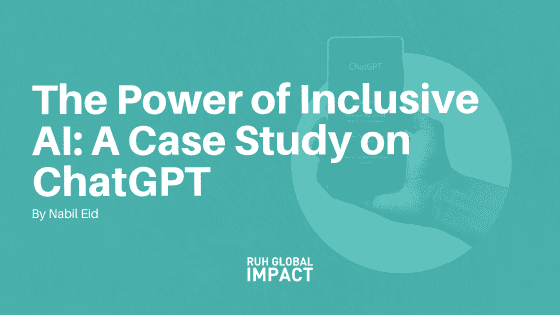Medical marijuana is legal in 30 states, including Ohio. The constituents and lawmakers of these states have seen the light. They’ve read the facts, seen results, or experienced the effects of the beneficial drug to legalize it. Now how do we convince the rest of the country to follow suit so all persons who have a medical need can have equal access to it?
Why is medical marijuana legalized in many states?
Medical marijuana has been treating illnesses and debilitating conditions since ancient times. The Chinese Emperor Shen Nung first discovered its healing properties in 2700 B.C. For over 4000 years, other cultures such as the Egyptians, Greeks, Indians, and Muslims have used cannabis to treat various ailments. Even the Bible says Jesus had used cannabis oil to heal persons. Early American settlers also brought hemp, as it was known then, to treat the many psychological and physical illnesses they were exposed to.
Today medical marijuana is termed cannabidiol (CBD). Unlike the kind that has been used for thousands of years, CBD lacks psychoactive effects since it has no THC, the compound that can make you high. In other words, if someone takes CBD, they are not likely to see purple elephants, feel like they are floating on air, or forget what they were doing five minutes ago.
CBD can treat a number of symptoms. It reduces seizures and tremors. In fact, this past June the Food and Drug Administration (FDA) approved a marijuana-based drug called Epidiolex that helps relieve seizures. It’s CBD oil in a pill form. It’s also a godsend for persons with epilepsy and cerebral palsy. According to a multi-study conducted by Brazilian scientists as reported in Cannabidiol and Epilepsy Meta-Analysis, 71% of patients taking Epidiolex had reduced seizures. The study had participants try 4 to 12 medications for 3 years prior to taking CBD. Seizures were completely gone in one in ten patients who took CBD.
Nociceptive pain is another symptom that CBD can help alleviate. This type of pain appears in nerve receptors, which occurs with fibromyalgia, rheumatoid arthritis, inflammatory bowel diseases, HIV or AIDS, and cancer. Like analgesics, CBD affects the spine’s nerve endings, which extends to other parts of the body. It effectively relaxes muscles, relieving pressure on the nerve endings, so the pain disappears.
Sara Ruh, daughter of Debra Ruh, CEO, and Founder of Ruh Global Communications has used CBD to alleviate discomfort due to Irritable Bowel Syndrome (IBS). Unlike analgesics, however, CBD doesn’t cause serious side effects. For example, painkillers -such as Oxycontin and Percocet can cause nausea, vomiting, disillusions, constipation, sleepiness, and addiction. In fact, experiencing those side effects was why Debra decided to give Sara CBD. According to WebMD, CBD may cause low blood pressure, lightheadedness, dizziness, and drowsiness, none of which are life-threatening.
CBD can help cancer patients not only decrease pain but also nausea while it increases appetite. It also can reduce the growth and spread of cancer cells. According to a Harvard University study, not only does medical marijuana decrease cancer cells, but it also doesn’t damage the surrounding healthy cells like traditional treatments such as chemotherapy and radiation. Consequently, cancer patients may experience less nausea, reduced hair loss, and a stronger immune system.
Why isn’t medical pot legalized federally yet?
Until 1937, marijuana was legal in the United States. In fact, it was an often prescribed medicine until then. In 1930, however, Henry Anslinger, Commissioner of the Federal Bureau of Narcotics, started a vigilant campaign against marijuana after he lost the battle with prohibition. The reefer (a term coined back then) campaign was a way to increase his department’s budget. He blitzed the media with public service announcements (PSA’s) and a film called “Reefer Madness” on how marijuana made everybody who smoked it monsters. Effects of that media blitz resonate through the years and linger to this day.
Federally, marijuana is still considered a Schedule 1 substance, which means it has a high potential for abuse. Painkillers and alcohol have a much higher potential for abuse and an even higher potential for death. In fact, according to a study at Victoria University found that people who took medical marijuana didn’t have a need for alcohol or opioids. According to Addiction Blog, unlike the two other substances, marijuana hasn’t caused deaths.
Besides propaganda misconceptions stemming from 80 years ago, medical marijuana has been a threat to pharmaceutical companies. Because it helps treat numerous illnesses, is readily available and inexpensive, big pharms have feared a decrease in their prescribed drug products. Accordingly, because drug companies are very influential lobbyists in Congress, they have persuaded members to vote against a national mandate for medical marijuana.
Why is hope still alive for medical marijuana nationwide?
Although medical marijuana may not become legal nationwide any time soon, some pharmaceutical companies have become smarter by developing synthetic CBD. Besides GW Pharmaceutical’s Epidiolex for seizures, the international pharmaceutical company Tilray will start selling medical marijuana to nations where it is legal.
Another hopeful sign is more states plan to get on the legalization bandwagon. They include Utah, Tennessee, Texas, and Georgia as a partial list. Because of more and more state constituents crying out for medical marijuana, these states feel the pressure from neighboring states who already have legal medical marijuana. Some representatives of these “pot awaken” states, such as Rep. John Boehner, realized that legalized medical (and recreational) cannabis is very profitable. In California alone, pot dispensaries are predicted to profit over $20 billion by 2020. According to Bloomberg, the marijuana market will soar to $150 billion.
It is sad, and unfortunate that money must be a factor in making people feel better. However, the patients who depend on medical cannabis couldn’t be more relieved. They are becoming more hopeful that this choice of medical treatment will be no longer banned by the government.
At Ruh Global Communications we are always looking at ways to advance the efforts for providing growth and inclusion for persons with disabilities in all sectors, including the healthcare sector. Feel free to contact us to see how we can help you and your organization with inclusion. For more information about our services, please visit our website at; www.RuhGlobal.com




